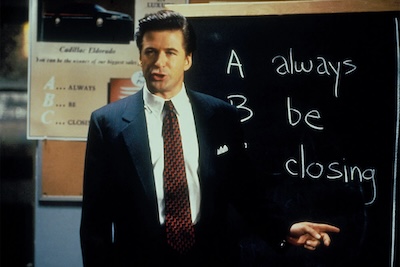Quincy Jones may be the most fabled producer and composer of the modern era. Jones started out as a trumpeter. He can be heard in the ‘50s playing on second trumpet for the studio band that recorded six songs for TV with Elvis Presley. However, Jones’ early days were notable for his work in jazz. At the height of his jazz era, he played trumpet and served as the musical director for the legendary Dizzy Gillespie. Jones started cutting back on his performing days before a cerebral aneurysm ended his playing days in 1974. As Jones moved into production, conducting, and composing, he worked with Count Basie and Frank Sinatra as conductor and arranger on two albums in the sixties. Jones’ first foray into pop music began with producing massive hits for Leslie Gore (including “It’s My Party” and “You Don’t Own Me”).
Jones also became an in-demand composer for film scores during the sixties. To call his work rate “prolific” would be an insult. He created scores for such notable movies as Sidney Lumet’s The Pawnbroker (1964), The Slender Thread (1965), Walk Don’t Run (1966), Banning, Enter Laughing, In The Heat Of The Night, In Cold Blood (all four in 1967), For Love of Ivy (1968), The Italian Job, Bob & Carol & Ted & Alice, Cactus Flower, The Italian Job (all four in 1969), The Out of Towners, They Call Me Mr. Tibbs! (both in 1970), The Anderson Tapes and $ (both in 1971), The Hot Rock, The New Centurions, The Getaway (all three in 1972). After that extraordinary string of scores, Jones slowed his work rate post-aneurysm, which is to say he worked like mad, but not as madly. While the laundry list of scores I mentioned is lengthy, it is incomplete. I only chose the most memorable films over that astonishing eight-year run. Over that stretch, Jones scored three Oscar nominations. One for the score of In Cold Blood, and two for original song (“The Eyes of Love” from Banning, and the title song for “For Love of Ivy). How his scores for The Pawnbroker, In The Heat Of The Night, and The Italian Job were not given a nod will forever remain a mystery.
While Jones may have slowed his working pace to a more human level, he remained extraordinarily productive after his health scare. With the creation of Qwest Productions in 1975, he produced several albums for other artists. When he returned to film in 1978 with The Wiz, Jones would meet the person whose career he would make, and who in turn would make Jones a household name in his own right: Michael Jackson. The Wiz may have been a bomb at the box office (although Jones would receive his fourth Oscar nomination for the film’s score), but over the next decade, the three albums Jones would produce for Jackson would change the course of pop music history. First came “Off the Wall” in 1979 (to my mind Jackson’s best album), the pop culture phenomenon “Thriller” in 1982, which to this day is the biggest-selling album of all time, and the follow-up to that landmark album “Bad,” which may have suffered by comparison to the previous two albums in terms of overall quality, still sold eleven million albums. The trio of records Jones recorded with Jackson have sold fifty-four million albums in the USA alone, with “Thriller” selling an astonishing thirty-four million by itself.
Somehow, Jones accomplished all of this while being a recording artist in his own right. From 1955 to 1981, Jones recorded twenty-seven albums under his name. Most of them were jazz-based, but as he entered the world of pop music as a producer, his albums started incorporating pop and R&B into the mix. Only one of Jones’ jazz albums went gold, but “Sounds…and Stuff Like That” (from 1978, the same year “Off The Wall” was released) went platinum on the strength of three top 40 hits, including the James Ingram-sung “Just Once,” which would become Jones’ first top twenty single. His next album, “The Dude,” would also go platinum and included Jones’ biggest solo single (also sung by Ingram), “One Hundred Ways,” which reached number fourteen on the Billboard Top 40.
In 1985, Jones would return to the big screen as a film producer, songwriter, and composer for Steven Spielberg’s The Color Purple. The film, directed by Steven Spielberg, was not only a huge financial success, but received eleven Oscar nominations–three for Jones as producer, composer, and for best song (“Miss Celie’s Blues”). That same year, the night (and well into the morning) after the American Music Awards, Jones arranged and produced the most successful charity song in history: “We Are The World.” Jones not only led the all-night recording session (now immortalized by the Netflix documentary The Greatest Night in Pop), he corralled forty-six massive egos in one room and got them to (mostly) play nice. Whatever one may think of the song artistically, the fact that Jones could complete a song at all is an extraordinary feat. “We Are The World” sold twenty million records, with all the proceeds to relieve Ethiopia’s famine through USA for Africa.
After an eight-year break, Jones returned to his solo career with “Back on the Block,” which went to number nine on the Billboard album charts, sold more than a million copies, and included two Top 40 hits (“I’ll Be Good to You” with Ray Charles and Chaka Khan, and “The Secret Garden” featuring Ingram, Al B. Sure, Barry White, and El Debarge). Six years later, Jones would release his final studio album (his 32nd) with “Q’S Juke Joint,” another million-seller.
Jones also made his mark on television. In the ’70s, he worked as a composer on the series Ironside and The Bill Cosby Show and then returned as a producer of The Fresh Prince of Bel-Air, In The House, Mad TV, and the Fresh Prince reboot Bel-Air. His final film credit came just a year ago as the producer of the musical version of The Color Purple.
Did you get all that? Quincy Jones’ career was so monumental that it could almost be defined by what I didn’t write. Like the fact that I didn’t mention that he worked with Cannonball Adderly, Herb Alpert, Louis Armstrong, Tony Bennett, George Benson, The Brothers Johnson, Sammy Davis Jr., Billie Eckstine, Ella Fitzgerald, Aretha Franklin, Donny Hathaway, Bob James, Peggy Lee, Little Richard, Billy Preston, Rufus, Donna Summer, Sarah Vaughn, Dinah Washinton, and Andy Williams. That’s right, Andy Williams.
Only now am I getting to the awards he received over his career. Jones received Oscars for the Jean Hersholt Humanitarian Award in 1985, and next year’s Oscars will fete him with an Honorary award. He has also won 28 Grammys, an Emmy, and a Tony (best revival of a musical in 2016 for The Color Purple), an Emmy for composing the music for Roots. He is one of twenty-seven people in history to win the fabled EGOT (Emmy, Grammy, Oscar, Tony). Hell, his life was so big that there is not one, but two excellent documentaries covering his life and career: Listen Up: The Lives of Quincy Jones (1990) and Quincy (2018)–co-written and co-directed by his daughter, Rashida Jones.
If there has ever been a more significant (primarily) behind-the-scenes artist in modern popular culture than Quincy Jones, I have no idea who it would be. I do know that list would be incredibly short. I’d bet he would be the only name on it, which doesn’t make it a list at all. That’s just one name. Quincy Jones.
Quincy Jones died on November 3, 2024. He was 91 years old.








![‘Pirates! The Penzance Musical’ Breakout Star Nicholas Barasch Discusses Performing On The Tonys With Seven Stitches On His Face [VIDEO]](https://thecontending.com/wp-content/uploads/2025/06/Pirates0011r-120x86.jpg)

A true legend has passed away.
Rest In Peace.
It’s kind of sobering to think that there are maybe less than ten or so true legends of 50’s-60’s jazz left. Herbie Hancock, Marshall Allen, Sonny Rollins and Ron Carter are the only ones immediately coming to mind
I knew Quincy had been a busy man, and incredibly influential, but I'm only learning now just how amazing a talent he was; he had 91 years, and he totally filled them up. All hail the traveler…
(Speaking of traveling: Crimony, did everyone bail on Sasha, and leave Awards Daily a smoking hull? I knew she was going coocoo for Cocoa Puffs for several years now, but I didn't realize just how badly everything went off the rails until I saw the Hollywood Reporter piece earlier this year. It's too damn bad, because I enjoyed the site immensely for nigh on 20 years, but when people want to set themselves on fire that badly, all you can do is call the Fire Department and get the hell out of the way.)